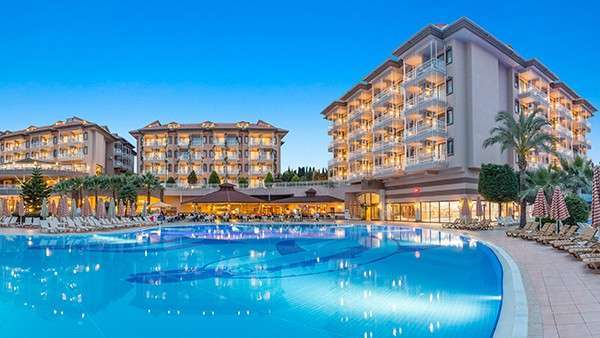Multiple factors point to an economy that is firmly in recovery as a critical mass of the U.S. population becomes vaccinated. Stimulus checks have bolstered personal savings, consumption has surged to record levels, and reviving air travel suggests that both business and leisure travelers are back on the move. Many expect these economic tailwinds to boost commercial real estate fundamentals, inciting recovery speculation and driving buyer activity. By the same token, the recovery has thus far been uneven, with some cities, states, and property types jumping ahead of others, generating a broad range of valuation trends. Many investors remain in a holding pattern, awaiting additional clarity before they sell, restraining the flow of marketable inventory. This has exacerbated the expectation gap between buyers and sellers in many markets.
Competitive bidding spurs cap rate compression.
Private investors have been a driving force behind commercial property sales since the onset of the health crisis, representing over half of commercial real estate sales dollar volume during periods of peak uncertainty. Buyers have most aggressively focused on assets that weathered the pandemic best, including industrial, multifamily, and self-storage properties. Investors have also targeted property types expected to make a quick post-crisis recovery, such as hotels as well as certain types of retail and seniors housing. While some discounting has occurred in unique situations, valuations of most asset types have largely held as strong buyer interest has aligned with a limited for-sale inventory.
Industrial investors anticipate a robust outlook.
The alignment of steady e-commerce growth, increased warehousing of safety stock and the prospects of reviving imports and exports have amplified industrial investor optimism. Although cap rates range dramatically depending on the market, property vintage, and numerous other factors, they have been favored with downward pressure predating the pandemic. Over the last year, this trend has gained momentum, lifting prices and reducing yields. Infill locations remain a top target for private investors while institutional funds have favored larger assets with quality leases in place in port and intermodal hub metros.
Multifamily pricing surpasses pre-pandemic levels.
In numerous markets, well-performing apartment properties have achieved pricing above pre-pandemic levels. Though some submarkets in some metros continue to contend with weakened fundamentals that are suppressing values, optimistic investors in many cases are underwriting a strong recovery in 2021. Large primary markets have been set back the most with a 3.6 percent rent decline over last year, but rates in secondary and tertiary markets grew by 1.6 percent. The performance differential reflects migration trends driven both by the pandemic as well as the aging of the millennial generation. Half of the millennials are 30 years of age or older, common family formation years, spurring demand for larger, more affordable living spaces outside the urban core. Workforce housing will likely enjoy the most robust housing demand, but as workplaces reopen Class A properties will also see a demand recovery. The collage of positive forecasts lifted investor optimism, spurring acquisition demand, but current trends have also persuaded some prospective sellers to hold onto assets longer. Strong buyer interest has aligned with hesitant seller activity to bolster price appreciation and cap rate compression, pushing the national average cap rate below the low-5 percent range.
The retail sector faces wide pricing variance.
Investor demand for single-tenant properties that sustained performance through the pandemic such as discount stores, drugstores, and quick service drive-thru restaurants remains high. This is preserving pricing momentum and cap rate compression. Pricing of course varies depending on the length of lease, the location of the property, and numerous other factors, but the overall average cap rate has dipped to the low-6 percent range. Grocery-anchored shopping centers in growing submarkets are also being pursued by investors, driving cap rates for these assets to the 6 percent to 8 percent range depending on tenant profile, payment history, and location. Buyers remain cautious regarding multi- and single-tenant spaces dependent on weekday foot traffic or close social interactions. A revival is beginning to mount for these types of properties, however, as states reopen their economies. For underperforming properties, a bid-ask imbalance is inhibiting sales.
Uncertainty restrains office investor activity.
Office buildings continue to face an unclear demand outlook even as more companies take steps to curb remote work. Assets located in walkable first-tier suburban settings with a strong lease profile have attracted the most investor attention, and pricing in growth markets can reach above pre-pandemic levels. Urban office towers still face several hurdles in bringing all workers back in, such as trepidation toward public transit or crowded elevators. Because of these impediments, cap rates across the office sector have remained stable on average, in the low-7 percent range. Medical offices, in contrast, have more clarity on long-term demand, sustaining investor interest. Cap rates for recent trades of these assets have nudged lower, to just below their historical average of 7 percent.
Commercial real estate cap rates offer compelling margins.
Many investors anticipated the health crisis to precede a wave of price discounting, but that outcome has become less common as the country’s health situation has improved. The limited number of marketed assets has instead supported price appreciation and cap rate compression in regions favored with a positive growth outlook. While yields have been contracting, the margin relative to alternative, low-risk investment vehicles remains wide as interest rates are still historically low. As the economy reopens, commercial real estate demand profiles are strengthening, and that anticipated momentum is carrying commercial real estate prices upward in most markets and property types.
Source: Expectations of Strong Post-COVID Recovery Bolster Competition for Commercial Real Estate Assets

Randolph is a Multifamily Investment Sales Broker with eXp Commercial servicing Multifamily Buyers and Sellers in the Greater Chicago Area.

